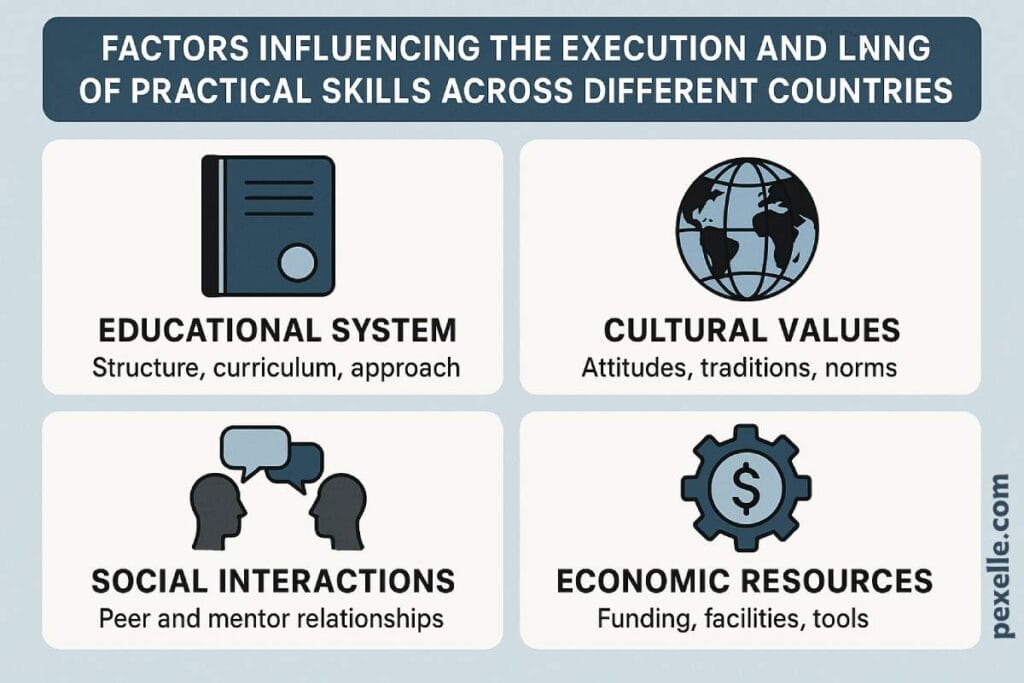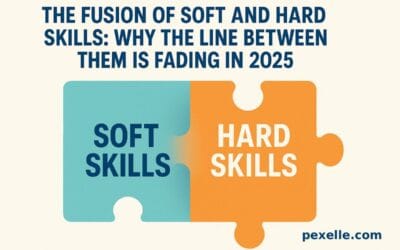Factors Influencing the Execution and Learning of Practical Skills Across Different Countries

In today’s interconnected world, the ability to acquire and apply practical skills is critical for personal growth, employability, and economic development. However, the process of learning and executing these skills varies widely across countries. This variation stems from a range of social, economic, cultural, technological, and policy-related factors that shape how skills are taught, developed, and applied in real-world settings. Understanding these parameters can help policymakers, educators, and individuals design more effective strategies for global skill development.
1. Education and Training Infrastructure
One of the most influential factors is the quality and accessibility of a country’s education and vocational training systems. Countries with well-established Technical and Vocational Education and Training (TVET) programs, modern facilities, and qualified instructors tend to produce individuals who can quickly adapt to practical work environments. For example, Germany’s dual-education system combines classroom learning with on-the-job training, enabling students to transition smoothly into skilled roles. In contrast, countries with outdated training resources may struggle to prepare learners for modern job requirements.
2. Economic Environment and Industry Demand
The economic health of a country directly affects the scope and relevance of practical skill development. In high-income nations, industries may require advanced technical competencies—such as robotics, precision engineering, or digital fabrication—while in lower-income regions, practical skills may be oriented towards agriculture, basic manufacturing, or construction. Moreover, the level of investment in research, innovation, and industry partnerships significantly impacts the pace at which new skills are adopted.
3. Cultural Attitudes Toward Skills and Work
Cultural perceptions of certain professions or trades can either encourage or discourage skill acquisition. In some societies, manual labor or trade professions are held in high esteem, fostering pride and dedication among practitioners. In others, such roles may be undervalued, pushing people towards academic careers even if practical skills are in high demand. Additionally, cultural norms around gender roles can influence who is encouraged to learn certain skills—for example, engineering or carpentry being male-dominated in some countries, while caregiving and nursing are more female-oriented.
4. Technological Access and Digital Integration
In the digital era, access to technology is a major determinant of skill development. Countries with widespread internet connectivity and access to modern tools can integrate e-learning platforms, simulations, and augmented reality (AR) into training programs, accelerating the learning process. For instance, a welding student in a technologically advanced nation may practice in a VR simulator before handling real equipment, reducing risks and improving efficiency. Conversely, in regions with limited tech access, skill acquisition often relies on traditional methods, which can slow progress.
5. Government Policies and Regulations
National policy frameworks shape the way practical skills are standardized, certified, and promoted. Governments that align skill development with labor market needs—through public-private partnerships, apprenticeship incentives, and skills recognition systems—can create a robust workforce ready for domestic and international employment. For example, the European Qualifications Framework (EQF) facilitates skill recognition across member countries, enabling workers to move freely for job opportunities.
6. Socioeconomic Barriers and Accessibility
Even in countries with advanced training facilities, socioeconomic disparities can limit access to skill learning opportunities. High tuition fees, geographical distance from training centers, or the need to work while studying can hinder participation. Furthermore, marginalized groups—such as refugees, rural populations, or individuals with disabilities—often face additional challenges in acquiring practical skills unless targeted inclusion programs are in place.
7. Globalization and International Standards
In an interconnected global economy, international skill standards and certifications—such as ISO standards or globally recognized welding certifications—are becoming increasingly important. Countries that align their training programs with these standards enable their workforce to compete internationally, while others may find their skills undervalued in global markets.
Conclusion
The learning and execution of practical skills in any country are influenced by a complex interplay of educational, economic, cultural, technological, policy, and social factors. For nations aiming to strengthen their workforce, a holistic approach is essential—one that not only builds technical proficiency but also ensures equitable access, adapts to cultural contexts, and stays aligned with global industry trends. By understanding and addressing these parameters, societies can create a sustainable foundation for skill development that benefits both individuals and economies.
Source : Medium.com




